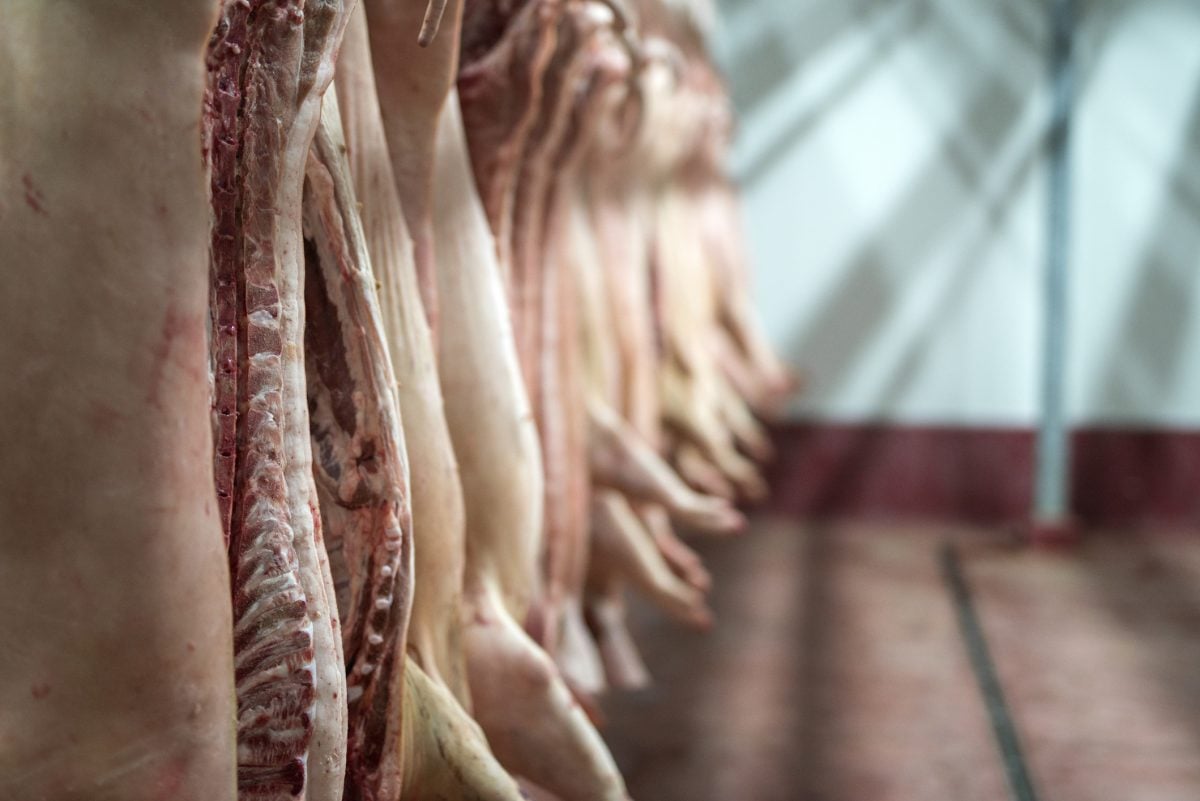By Theopolis Waters
CHICAGO, Jan 7 (Reuters) – Chicago Mercantile Exchange lean hogs turned higher on Wednesday after initial selling, benefiting from sentiment that cash prices are about to bottom out soon, traders said.
February closed 0.750 cent per lb higher at 79.325 cents, and April finished up 0.525 cents at 81.875 cents.
Slaughter-ready, or cash, hog prices tend to move up around the middle of January amid wintry weather that slows down animal weight gains and disrupts the movement of livestock to market, an Iowa dealer said.
Read Also

U.S. livestock: Cattle slip back, hogs gain
Chicago cattle futures slipped back on Friday after Thursday’s pause. Hog futures crept upward. Most-active December live cattle futures closed…
However, packers need to clean up a backlog of supplies caused by plant closures over the New Year’s holiday, he said.
On Wednesday morning, the average price of cash hogs in the Iowa/Minnesota market had dropped 45 cents per hundredweight (cwt) from Tuesday to $74.32, the U.S. Department of Agriculture said.
CME lean hog and live cattle investors await the first of five days for the Standard & Poor’s Goldman Sachs Commodity Index (S&P GSCI) roll process to officially begin on Thursday.
Funds that follow the S&P GSCI will sell, or “roll,” their February long positions mostly into the April contract.
LIVE CATTLE POST LOSSES
CME live cattle settled moderately lower, pressured by a supply increase outlook that trumped this week’s higher cash and wholesale beef prices.
February live cattle closed down 0.125 cent per lb at 165.900 cents, and April ended 0.275 cent lower at 164.725 cents.
So far, cash cattle in the U.S. Plains moved at $168 to $172 per cwt, up from $166 to $169 last week, feedlot sources said.
The morning’s choice wholesale beef price climbed $1.76 per cwt from Tuesday to $252.09. Select cuts rose $1.73 to $241.78, according to the USDA.
Packers upped bids for supplies following an arctic blast in the Plains that caused cattle weights to come down, which delayed their delivery to plants.
Processors passed on high cattle costs to grocers replacing product that had moved over the New Year’s holiday.
Lower corn prices and strong cash feeder cattle values supported the CME feeder cattle January contract.
Remaining feeder cattle months drew pressure from live cattle market selling.
January closed 0.950 cent per lb higher at 225.650 cents, March ended down 0.550 cent at 220.325 cents, and April finished 0.700 cent lower at 220.150 cents.













